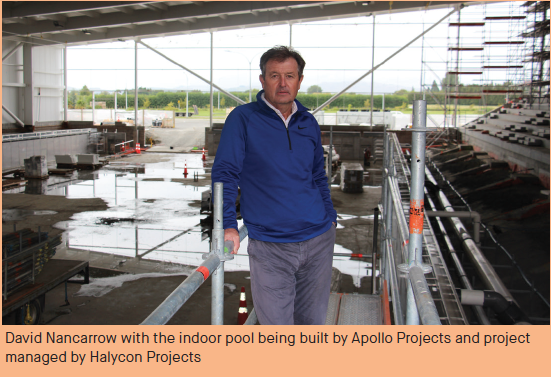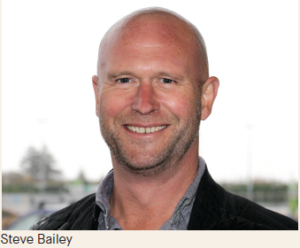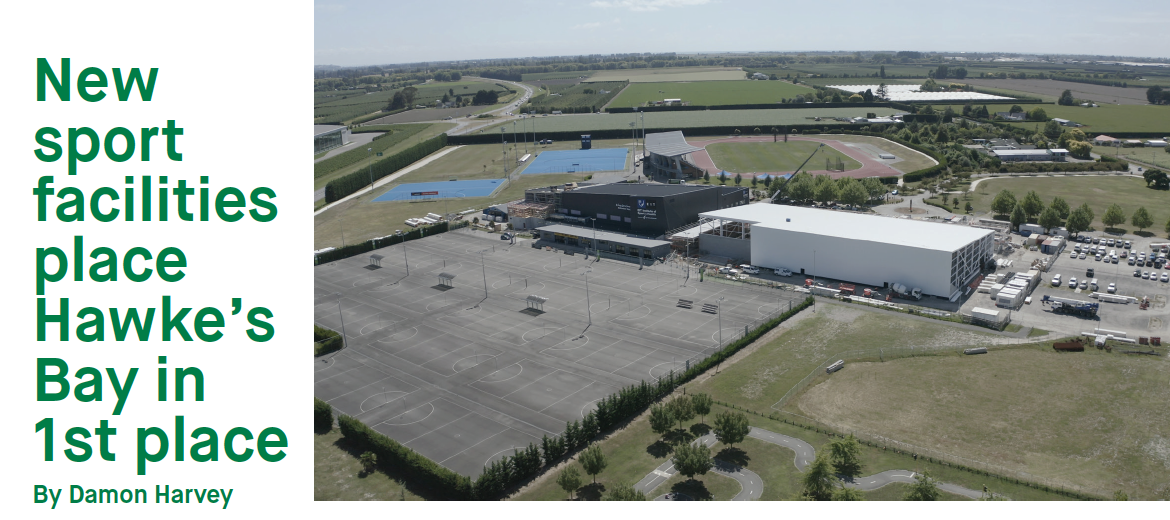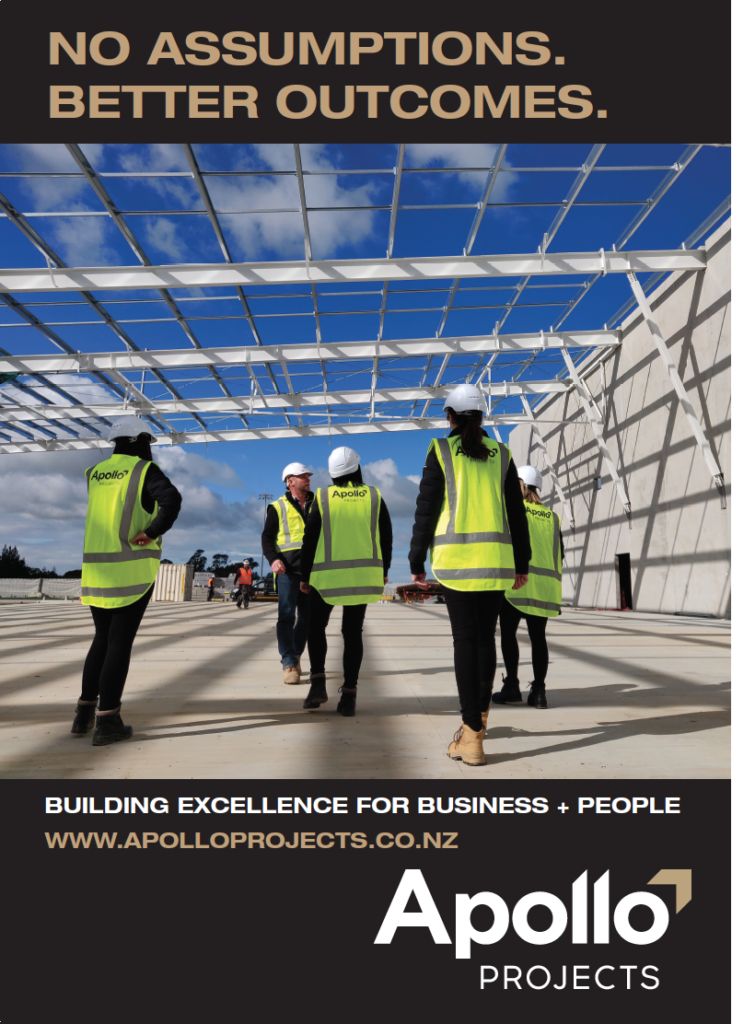Many local businesses have scored big-time in recent years from the development of sporting facilities, with over $150 million worth of investment in sports facility assets throughout the region.
Some of the biggest projects are now set for completion and are being handed over to local sports trusts to welcome users – predominantly Hawke’s Bay residents – and create economic windfalls from national and international sporting events.
Hawke’s Bay now has the potential to host events such as national and international Masters Games that use multiple venues, through to junior and senior Pacific, Oceania or world championships for canoe polo, athletics, basketball, volleyball and cricket.
The Mitre 10 Park in Hastings is now the largest multisport facility in New Zealand.
The sports park was created after Hastings District Council (HDC) sold Nelson Park – the home to athletics, rugby and league – for $18 million to be converted into large format retail in 2007. Council used $11 million of the sale proceeds to part fund the new sports park.
Today Mitre 10 Park is the regional home of netball, athletics, canoe polo and rugby league, joined by clubs and competitions in football, hockey, rugby, touch rugby, Ki o Rahi and futsal; and via the Hawke’s Bay Community Fitness Centre Trust (HBCFCT), there’s a fitness centre, high-performance gym, indoor sprint track, pole vault, café, medical services, meeting rooms and onsite accommodation.
As the Mitre 10 Park’s chief executive Jock MacIntosh puts it, a simple survey at athletic events confirms the sports park and the region offers everything athletes and their supporters want.
“When we host big athletics events, I survey attendees and ask how they rate the venue –we average over nine out of ten every time. I know I’m a bit biased but we are really lucky to have such a fantastic facility.”
Thanks to the vision of Sir Graeme Avery, who also led the development of the Millennium Institute of Sport, the Mitre 10 Park will this year welcome a $32 million regional aquatic centre with a 50-metre International Swimming Federation (FINA) global elite standard pool, a learn- to-swim pool and a hydrotherapy pool; a $5 million hostel with 60 beds; and a $3 million extension of the existing EIT Institute of Sport and Health Centre.
Operated by the HBCFCT, the three capital projects have been funded by the Lotteries Significant Projects Fund, the Provincial Growth Fund and the Infrastructure Reference Group’s shovel- ready funding.
The Hawke’s Bay community has also contributed $19 million, including $4 million from HDC.
Elsewhere at the park is an International Hockey Federation (FIH) Level 1 hockey turf, International Association Athletics Federations (IAAF) Level 2 athletics facilities, a multi-court canoe polo facility, sport fields for rugby, football and league, and netball courts. Over 300,000 people visit and use the park each year.
The founding trust of the Mitre 10 Park, the Hawke’s Bay Regional Sports Park Trust, will also complete a new build project in 2022 in partnership with Central Districts Cricket and Giants Boxing Academy.
The 2,000 m2 cricket and boxing centre will feature four indoor cricket lanes and a boxing area, comprising 600 m2 of purpose-built space supported by changing and office facilities for both codes.
A master plan for the 30-hectare sports park will set the future direction, helping identify opportunities for other sports as well as how to overcome traffic and carparking issues that have arisen due to the park’s growing popularity.
For HBCFCT chief executive David Nancarrow, the immediate focus is on ensuring the new aquatic complex covers its costs. Pools are regarded as a bottomless money pit but David is confident that HBCFCT can make it pay its way.
“The problem with a lot of pools is that once you fill them with swimmers, there’s not enough space for spectators, but we have the luxury of seating for 1,350 spectators, which will help us attract regional, national and southern hemisphere swim meets.”
The complex will also feature a learn-to- swim provision in a dedicated pool and a hydrotherapy pool for patient rehab and athlete recovery.
“We also hope that the swimming clubs will relocate and train here and be able to grow their sport. We will also have a water polo club, which is a new sport to the region and offers real growth opportunities.”
Economic opportunities from major sporting events
Hawke’s Bay Community Fitness Trust chief executive David Nancarrow says the opening of its three new builds – pool complex, hostel and indoor facility extension – creates significant economic opportunities for the region.

David says the region now offers a one- stop shop with a vast range of facilities to cater for one sport or many sports.
“Part and parcel of building these world- class facilities is attracting major events and an event strategy is firmly on our radar. We’re already starting to attract major events such as indoor pole vault events, and we have just won the North Island Weightlifting Championships, which draws 200 competitors.
Along with the vast facilities at Mitre 10 Park, Hawke’s Bay can now offer a larger multi-venue package including the two indoor arenas at Pettigrew Green Arena, field sports for rugby, football and hockey at Park Island, and cricket and rugby facilities at Napier’s McLean Park.
He says the new regional aquatic facility, with its FINA-approved 50-metre pool, will be the biggest in New Zealand with spectator capacity of 1,350, allowing for opportunities to host national and southern hemisphere events, which the trust is already pursuing.
Jock McIntosh says arguably the Mitre 10 Park is the best of its kind in New Zealand.
“We have the best athletics set-up, international Tier 1 hockey turfs and a world-class canoe polo set-up, so it becomes a very compelling mix of what is available.
The new hostel adds another new dimension for economic benefit, with national sports organisations such as athletics and rowing conducting high- performance training camps.
“This is a cool place for them to stay. They can use all the training and health science facilities here and stay onsite.”
Sport Facility build experience pays off
At the forefront in the construction of sport facilities is Apollo Projects, a business founded in Christchurch but now making a strong presence in Hawke’s Bay.
Apollo Projects Hawke’s Bay regional manager Steve Bailey and his team have been busy over the last 12 months building the regional aquatic centre in Hastings and the new indoor arena in Taradale.

Although relatively new to the region, their track record in large scale sport and community projects is impressive. Projects such as Te Pou Toetoe – Linwood Pools, He Puna Taimoana Hot Pools, Taiora: QEII Recreation and Sport Centre in Christchurch and High Performance Sport New Zealand’s Apollo Projects Centre has established the firm is the ‘go to’ for councils, trusts and commercial businesses.
As well as the two Hawke’s Bay sport projects, other current projects include a new aquatic centre in Gisborne, and indoor court facilities in Christchurch and Te Kuiti.
Steve says Apollo has gained a reputation for overcoming what is regarded in the industry as “Triple Constraint – of time, cost and scope”.
“There are multiple facets in play when it comes to delivering on time and on budget. Some of the obvious are good people, good systems and good communication between client and contractor but more recently other considerations have had more of an influence such as risk and resources.
“As design and build contractors we are well placed to manage this from day one of any project. If design does not consider your budget, then a tender process is nothing more than a lottery. We have a team of design managers and estimators who work solely on the pre-construction phase of every project.
Steve says this leads to facilities that not only look good but are functional and fit for purpose, and designed to budget.
“It’s then over to our team of highly skilled construction professionals who ensure that the quality is achieved and handed over on time and within budget.
When it comes to sport facilities Steve says participants and supporters aren’t too focussed on the design of a building but the overall experience.
“Whenever people go and play sport the buzz and excitement that is generated does not come from amazing architecture or fantastic detailing. It is more about the overall experience, whether playing or spectating.



